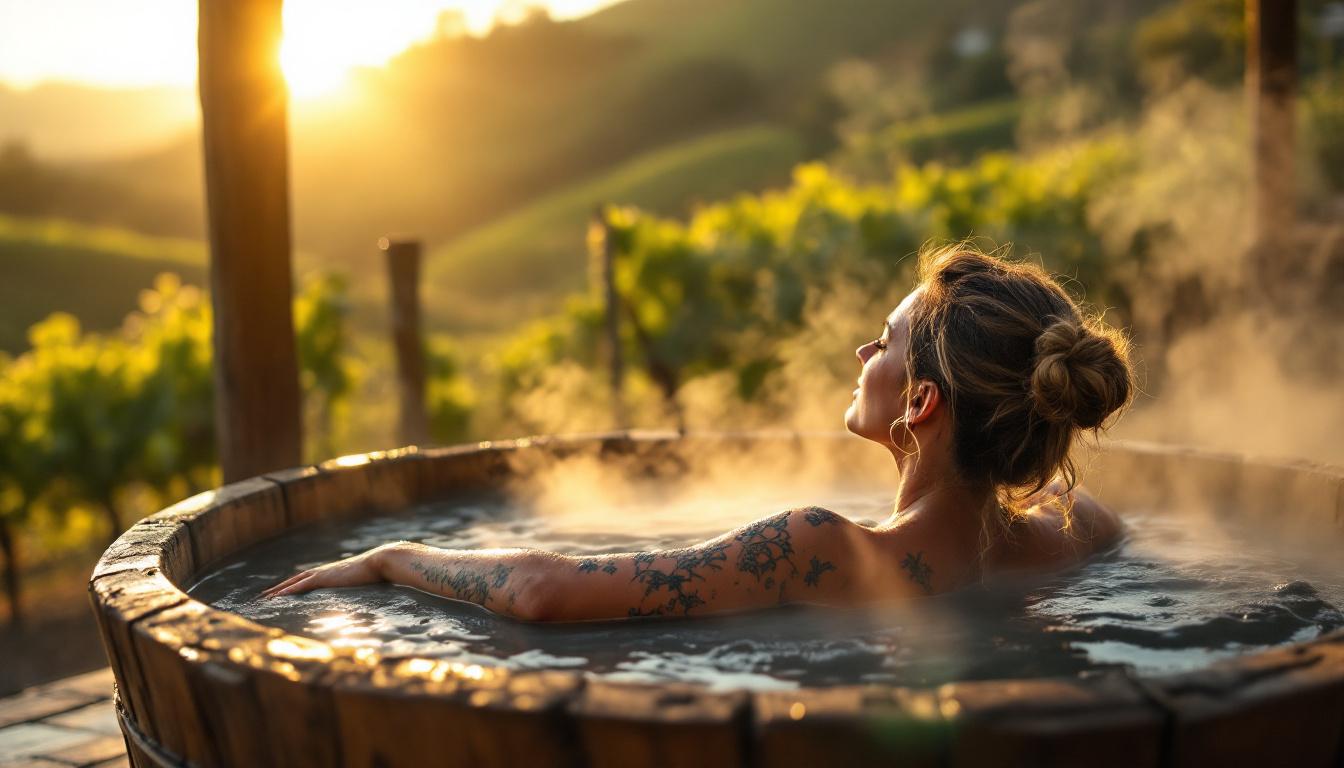While millions flock to overcrowded Napa City and St. Helena, paying premium prices for rushed tastings and packed restaurants, a quieter sanctuary awaits just 20 minutes north. Calistoga, the “Mud Bath Capital of the World,” offers the same world-class wines and stunning valley views at half the cost and with none of the chaos.
This charming town of just 5,000 residents delivers authentic Napa Valley experiences that mass tourism hasn’t yet discovered. Here, you can actually find parking, book same-day spa treatments, and enjoy unhurried conversations with local vintners who remember why they fell in love with winemaking.
The numbers don’t lie: while Napa Valley attracts 3.7 million visitors annually, the vast majority concentrate in the southern commercial hubs, leaving Calistoga blissfully uncrowded and refreshingly affordable.
Why the famous towns disappoint modern travelers
The overcrowding reality in Napa City and St. Helena
Peak season brings bumper-to-bumper traffic on Highway 29, with visitors spending more time in cars than tasting rooms. Parking costs $25-40 daily in downtown Napa, while restaurant reservations require booking months ahead. The authentic small-town charm that originally attracted visitors has been replaced by tourist-focused businesses that prioritize volume over genuine hospitality.
Premium pricing without premium experiences
Standard hotel rooms in St. Helena average $400-600 per night during summer, while basic wine tastings start at $50-75 per person with strict time limits. Many visitors report feeling rushed through experiences, paying luxury prices for what feels increasingly like a wine-themed amusement park rather than an authentic cultural destination.
The superior advantages you’ll actually experience
Genuine cost savings without compromising quality
Calistoga’s boutique hotels offer comparable luxury at $200-300 per night, often including complimentary breakfast and afternoon wine hours. Wine tastings typically cost $25-40 with generous pours and unhurried discussions. The famous mud bath experiences, unique to this region, start at $85 compared to generic spa treatments elsewhere costing twice as much.
Authentic interactions with local vintners and artisans
Small family wineries like Schramsberg and Chateau Montelena offer intimate tastings where you’ll meet the actual winemakers, not hired hosts reading scripts. Local restaurants source directly from valley farms, and servers can actually tell you about the chef’s inspiration and ingredient origins because they work in a community, not a tourist machine.
The authentic culture mass tourism destroys
Preserved local traditions and community spirit
Calistoga maintains its historic railroad town character with locally-owned businesses and genuine community events. The Saturday farmers market features actual local growers, not tourist vendors. Residents still gather at Solbar for sunset cocktails and real conversations, creating the authentic atmosphere that commercialized areas have lost to Instagram-focused experiences.
Natural wonders protected from overdevelopment
The town’s volcanic geothermal springs remain largely protected from mass development, offering healing mud baths and mineral soaks in intimate settings rather than crowded resort complexes. Hiking trails like the Oat Hill Mine Trail provide solitary nature experiences just minutes from town, while popular Napa destinations require reservations even for outdoor activities.
The practical benefits that matter most
Effortless logistics and spontaneous discoveries
Free parking throughout downtown eliminates the stress and expense plaguing other valley towns. Same-day spa appointments are typically available, and walk-in wine tastings remain welcome at most venues. The compact town layout means everything is within easy walking distance, unlike sprawling commercial districts requiring constant driving and navigation.
Perfect timing for July visits before harvest crowds
Summer offers ideal weather for hot springs while avoiding the September harvest season chaos that brings peak crowds and premium pricing to the entire valley. July visitors enjoy warm evenings perfect for outdoor dining, fewer tour buses, and relaxed pace before the region’s busiest tourism period begins.
Calistoga represents what Napa Valley was meant to be: a place where wine, wellness, and authentic hospitality create memorable experiences rather than expensive photo opportunities. Discover more hidden California wine destinations that prioritize genuine culture over tourist traps.
Skip the crowds, save your money, and experience the real Napa Valley in Calistoga – where luxury means having space to breathe and time to truly taste the difference.
Essential planning questions answered
When is the best time to visit Calistoga?
July through August offers perfect weather for hot springs and outdoor dining, with significantly fewer crowds than the September harvest season. Spring (April-May) also provides excellent conditions with blooming wildflowers and comfortable temperatures for hiking.
How much should I budget for a Calistoga weekend?
Plan $200-300 per night for quality accommodations, $100-150 per person for wine tastings, and $80-120 for signature mud bath experiences. Dining ranges from $25 casual lunches to $75 fine dining dinners, making it roughly 50% less expensive than comparable experiences in Napa City.
What makes Calistoga’s mud baths special?
These are authentic volcanic ash treatments sourced from local geothermal springs, not artificial spa mixtures. The mineral-rich mud provides therapeutic benefits for skin and circulation, combined with natural hot spring soaks that have been used for healing since Native American times.
Can I visit wineries without reservations?
Many Calistoga area wineries still welcome walk-in visitors, especially during weekdays and off-peak hours. However, calling ahead ensures availability and often leads to more personalized experiences with winemakers or vineyard tours.
How do I get to Calistoga from San Francisco?
Drive north on Highway 101 to Highway 128 west, then north on Highway 29 – approximately 90 minutes total. Public transportation options include connecting buses through Santa Rosa, though rental cars provide the most flexibility for exploring local wineries and attractions.
